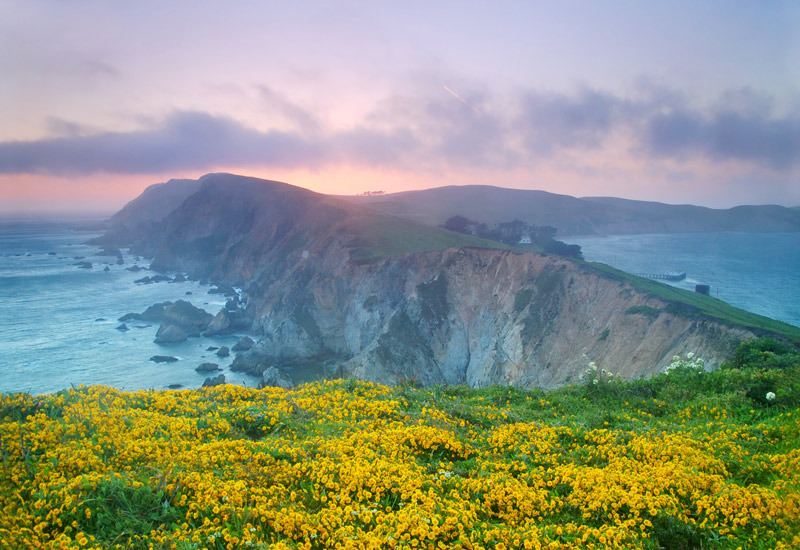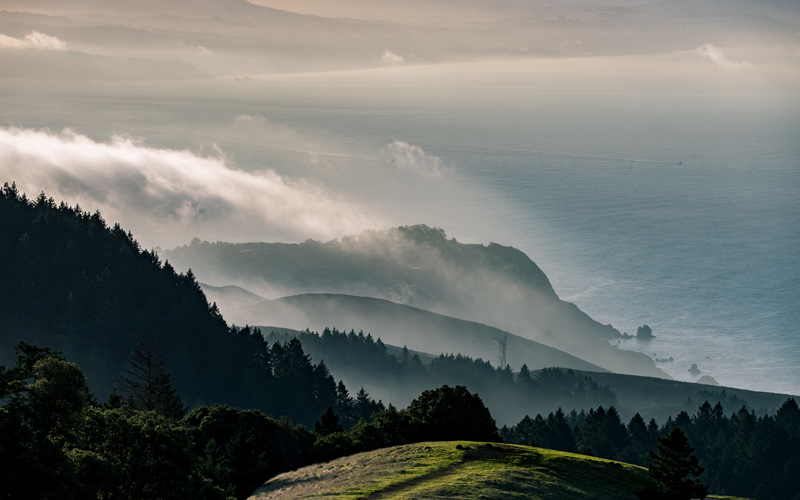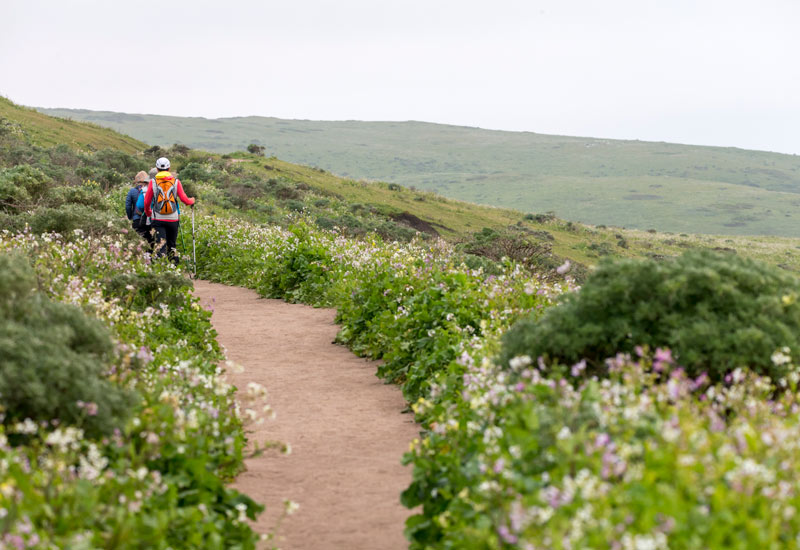Wildflower Season: Late Blooming Wildflowers and Where to Find Them in Marin County

By Matt Dolkas,
Senior Manager, Marketing
May 23, 2024
No worries—you didn’t miss it—late May and early June are the tail end of the wildflower season so don’t worry. There is still plenty of time and places to go to see the late-season wildflowers. You just need to know where to go and we’re here to help.
Wildflower season reaches its peak when the soil temperatures and water content are in their ideal states for each species of plant. For most wildflowers, these conditions arrive in late April and into early March. Since each species prefers a different window to blossom and begin their reproductive cycle, you can find flowers throughout the spring and early summer season in most of Marin County’s open spaces.
Think of wildflower season like a rolling cascade, with each species waiting for its chance to blossom in a brilliant sequence of spring color. Your visit to our local open spaces is just a snapshot of the wildflower season’s annual show. So, as the season winds down, you’re going to find the biggest, showy displays of wildflowers are where there’s still plenty of water available in the soil: higher elevations and near the coast.
Here’s where we recommend visiting to find the last of this season’s wildflowers:

CHIMNEY ROCK
At one of the western-most promontories of Point Reyes National Seashore, Chimney Rocki is one of the more dramatic landscapes to experience the spring bloom. This location also offers the chance to see northern elephant seals in their haul outs as well as migrating whales headed north from their birthing grounds in the warm waters of Mexico.
The weather at this location can be quite dramatic so be sure to check the forecast ahead of time and bring lots of layers. On your way, stop for picnic supplies at Inverness Park Market, some of the best sandwiches, in my opinion, this side of the Mississippi.
When to visit: Late March to May
Where to park: View on Google Maps
Dog-friendly: Nope, sorry
More information: From the National Park Service website

MOUNT TAMALPAIS STATE PARK
With the varied topography and soils, this park is home to a wide variety of wildflowers, including lupines, California poppies, goldfields, and many more. More than 750 plant species can be found in the park’s open grassland, chaparral, oak-covered knolls, dense stands of Douglas-fir and deep, fern-and redwood-filled canyons.
The Matt Davis and Bolinas Ridge trails offer a wide range of habitats to explore, providing a range of wildflowers to discover. It’s a steep landscape, so be prepared for a challenging hike amid breathtaking scenery.
When to visit: Late March to mid-April
Where to park: View directions on Google Maps to the Matt Davis trailhead parking area
Dog-friendly: Leashed dogs are allowed only on paved roads in developed areas
More information: From the California State Parks website

TOMALES POINT TRAIL
The Tomales Point Trail is a 9.4-mile hike that leads visitors through the Tule Elk Reserve and along the northernmost point of the protected Point Reyes National Seashore. With sweeping vistas of the Pacific Ocean, Tomales Bay, and east to the protected agricultural landscape of West Marin, it is one of the most profound places locally to see the spring flowers.
A visit to this part of the National Seashore also offers the chance to learn about the area’s rich history of farming and ranching. Be sure to save time at the trailhead for an exploration of the buildings around the historic Pierce Point Ranch. And note that it can get quite windy and cold when the wind starts to blow here so be sure to check the forecast and bring lots of layers.
When to visit: Late March to early June
Where to park: View on Google Maps for directions to Tomales Point trailhead parking
Dog-friendly: Nope, dogs are prohibited within the Tule Elk Reserve
More information: View the National Park Service website

LOOK, DON’T TOUCH
We encourage you to view wildflowers in Marin County responsibly and you can do so by following a few simple guidelines.
1. Never pick wildflowers. Please leave them in place.
2. Do not illegally dig up wildflowers to transplant to your garden.
3. Watch your step — please don’t trample or crush wildflowers or other habitat areas.
3. Do not enter private property to view wildflowers.
4. Be aware of sensitive, overused areas and stay on trails and roads during hikes.
DISCOVER MORE
DOWNLOAD OUR WILDFLOWER GUIDE